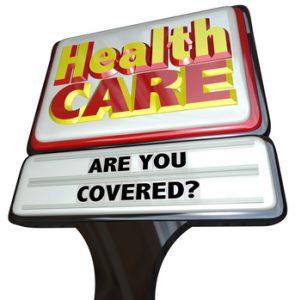Indiana health insurance for the uninsured is available at surprisingly low rates. If you do not have an in-force policy, we help you find coverage that will quickly provide benefits at a rate that you can afford. You need access to low-cost medical options and we’ll do the research to find those for you. There are many low-budget plans that include benefits that can be immediately used.
Inexpensive healthcare coverage is offered by Anthem Blue Cross, UnitedHealthcare (short-term and Group only), Humana (Group only), CareSource, Ambetter, and other reputable companies. Plans for individuals, families and the self-employed give you many different options to consider. There are approximately 700,000 uninsured persons in the state (according to Kaiser), although this number should continuously reduce. Federal subsidies for Marketplace plans have been increasing, providing many affordable plans for all state residents.
Several years ago, Administration changes were implemented, which further decreased the number of uncovered persons. Free clinics, prescription assistance and financial aid programs helped to reduce these numbers. The combination of Medicaid and CHIP programs, inexpensive Marketplace plans, and greater awareness of Open Enrollment deadlines, has helped hundreds of thousands of persons obtain coverage.
The Exchange
The Indiana Health Marketplace (Exchange) became functional seven years ago. Each year, Open Enrollment allows you to apply for a policy without answering medical questions. Your age, zip code and smoking status will determine your premium and a federal tax subsidy could reduce your cost, depending on your household income. For 2021 plans, the OE period began on November 1st. During pandemics, additional extensions are typically provided.

Currently, there is no surcharge for not having prior coverage. When you request a free quote on this page, quickly, you’ll be able to see the most affordable options. Until 2011, you were also able to view Aetna, UnitedHealthcare, Medical Mutual, Cigna and other carrier rates. But they no longer offer private medical insurance plans in Indiana, although we believe they will consider returning by 2022. Many additional legislative changes will impact which companies will underwrite private medical coverage in Indiana.
Although you are not charged a higher premium for not having a “qualified” policy, previously, you were assessed a tax penalty of up to 2.5% of your household income if you did not purchase/enroll for an approved plan by the end of the Open Enrollment period (typically December 15th). Temporary (discussed below), limited benefit, accident and critical illness did not qualify for the Affordable Care Act (ACA) requirements. Premiums on these types of plans are very low, but are not suitable for applicants with chronic illnesses.
Our Prices
The prices you view on this website are the lowest published rates provided by each carrier. We make it easy for you to compare premiums and benefits and apply for quality medical coverage without paying any fees. We’ll help you decide what type of policy is best for you, and what company offers the most affordable price for the coverage you want.Non-Obamacare options are available in Indiana, and you may apply for benefits at all times throughout the year.
Just because you don’t have existing coverage doesn’t mean that you aren’t eligible for federal subsidies or the most affordable plans from each carrier. And any existing conditions you had in the past, or are being treated for now, will have no impact on your Hoosier Marketplace plan or the benefits you are eligible for. You won’t be charged a higher premium or asked to “wait” before benefits begin.
Cheap, But Non-Compliant
A popular policy for those without coverage is a temporary short-term plan. This type of policy is the least expensive type of plan for the uninsured (assuming you missed Open Enrollment or don’t qualify for a subsidy). Coverage is designed to be kept for 90 days (or less), and it is ideal for persons that are laid off, between jobs, graduating students from high school or college, seasonal workers or anyone waiting for Medicare or perhaps Medicaid to begin.
Typically, UnitedHealthOne offers the most competitive rates. However, since they do not contain all 10 “Essential Health Benefits” (required by Obamacare), temporary contracts don’t satisfy the requirement of owning “qualified” coverage. Of course, the substantial savings in premium previously offset the 2.5% household income penalty imposed by the Department of Health And Human Services (HHS).
Policies are issued and approved quickly, and can be terminated at any time. The selected deductible applies to all coverage which keeps the rate low. If you need to quickly avoid a lapse in coverage, this type of plan may be worth looking at. You can have a contract approved in hours that will provide up to $1 million in benefits.When you have obtained or purchased other coverage, terminating the policy can be accomplished by a simple request in writing.
The Cheapest Non-Temporary Plans
“Catastrophic” or “High Deductible” plans also tend to be easy on the budget. Often used with Health Savings Accounts, these low cost policies cover major medical expenses such as hospital expenses, emergency room charges, inpatient and outpatient expenses and professional fees of doctors, nurses and surgeons. Typically, non-preventive office visits, prescriptions and other benefits are not included or a deductible must be met before utilization. However, for persons interested in keeping rates low in return for taking on additional risk, it is an ideal choice.

However, routine physicals, well-baby exams and OBGYN exams are covered without any out of pocket cost. And Network “re-pricing” will help your pocketbook. If you own a business or work for yourself, this option is a choice you should consider. Many self-employed persons are selecting these budget-oriented plans to keep premiums somewhat manageable.
What If You Don’t Have Coverage Now?
Unlike auto insurance, you will not be charged a higher rate because you don’t have prior existing health insurance. When you purchase a policy during Open Enrollment (or a special enrollment period throughout the year), a prior lapse or lack of qualified coverage will not impact your new plan. You will not be charged any extra fees, and there will be no waiting time or elimination period before you can use any covered benefit. Hoosier Healthwise, which is designed to help children, pregnant women, and low-income parents, can provide preventative benefits, mental-illness coverage, and dental and vision benefits. Applicants must be under age 19 and have household income under $29,700 (1 person) or $40,050 (2 persons).
However, for “limited-benefit” contracts, pre-existing conditions may not be immediately covered for any person that is uninsured at the time an application is submitted. Sometimes, after a waiting period, if the policy is approved, existing conditions will be covered. We generally don’t market these plans since the underwriting company is not nearly as recognized or as reputable as a standard Exchange carrier. “Limited-benefit” plans often impose a large application fee, that must be paid with your initial first monthly premium. Cancellation rates are also very high on these types of options.
We personally discuss your specific situation and recommend the company and plan that works best for you. Although pre-existing conditions do not impact the price you pay for your policy, we may still ask medical questions to help determine which plans best cover your medical expenses with the lowest possible out-of-pocket cost. If you currently are taking non-generic drugs, reviewing the prescription benefits of available plans becomes more important.
Other Options (Including Medicaid)
Indiana residents under the age of 65 who are blind or disabled may be eligible for health care under Indiana’s Medicaid program. Families with children and pregnant women who meet specific financial guidelines may be eligible to receive benefits under “Hoosier Healthwise.” For additional information on coverage for low-income families, please contact us and we’ll provide specific information. You can apply by phone or by visiting a local Medicaid office.
In 2013, Indiana, like many states, did not expand the high-risk insurance pool program to cover certain pre-existing conditions. Instead, the US Department of Health and Human Services took over the task. Indiana Governor Mitch Daniels correctly pointed out that costs and requirements were unknown and federal funding for the project might run out before it ended. When the Supreme Court upheld “Obamacare,” the Marketplace remained intact, so we continue to provide direct applications and free cost comparisons. When new healthcare plans are completely introduced, we will review all options so you pay the lowest price.
To easily view some of the best Indiana health insurance plans for the uninsured, you can fill in your zip code at the top of the page. Not all plans are alike and that’s where we can help with finding the “right” plan for you. If one of the major reasons you did not secure coverage was because of cost, your eligibility for the federal subsidy could help you obtain very affordable benefits.

